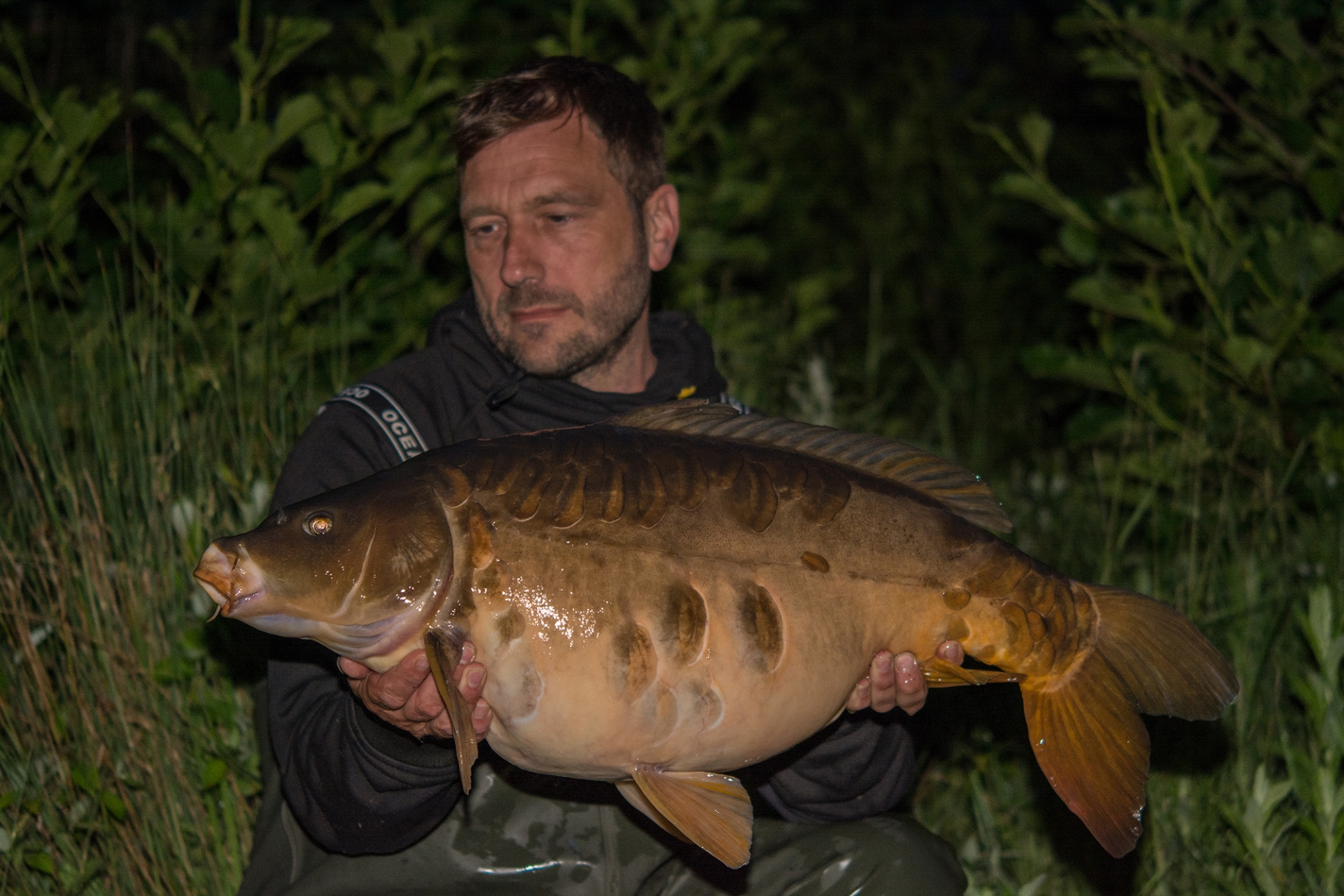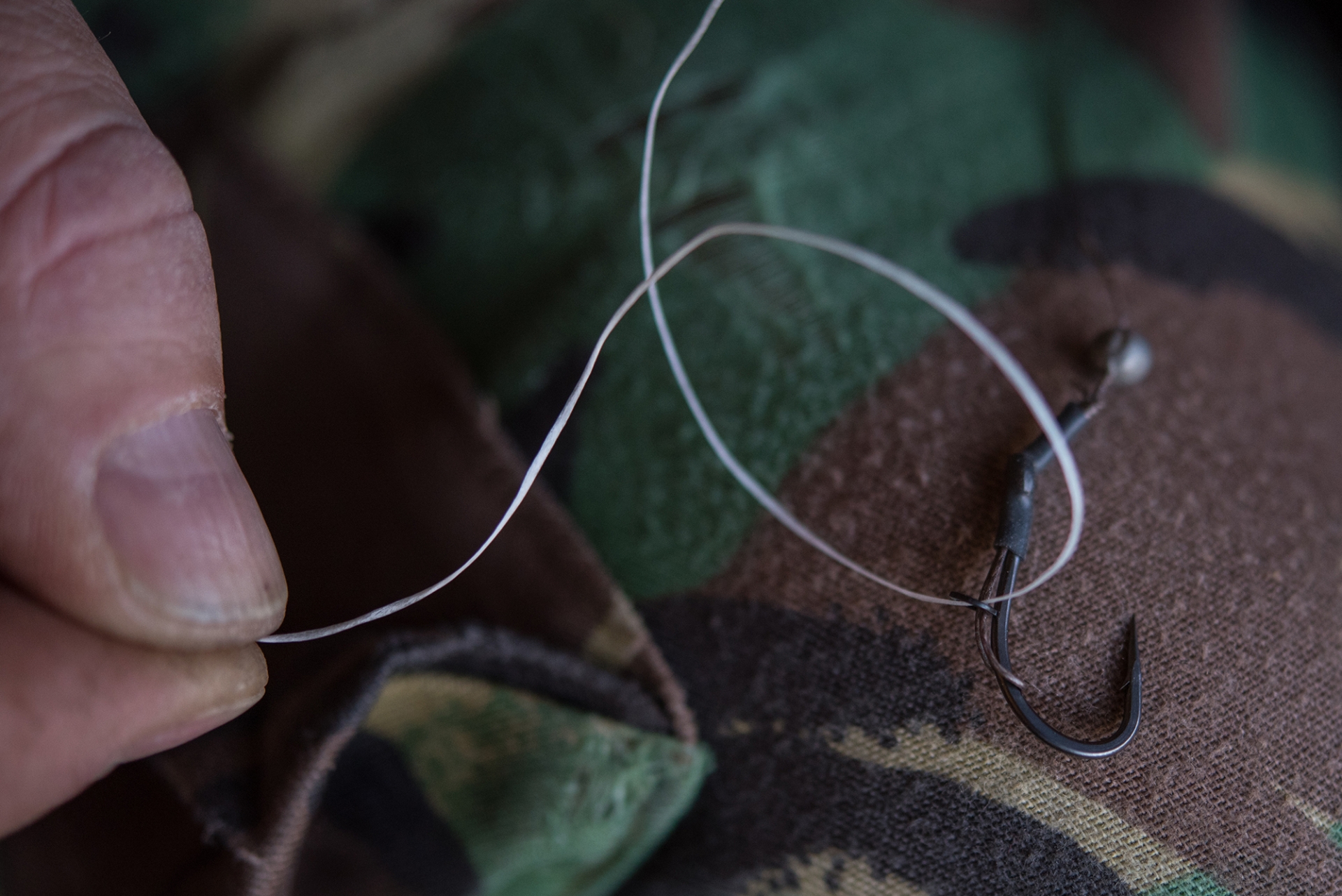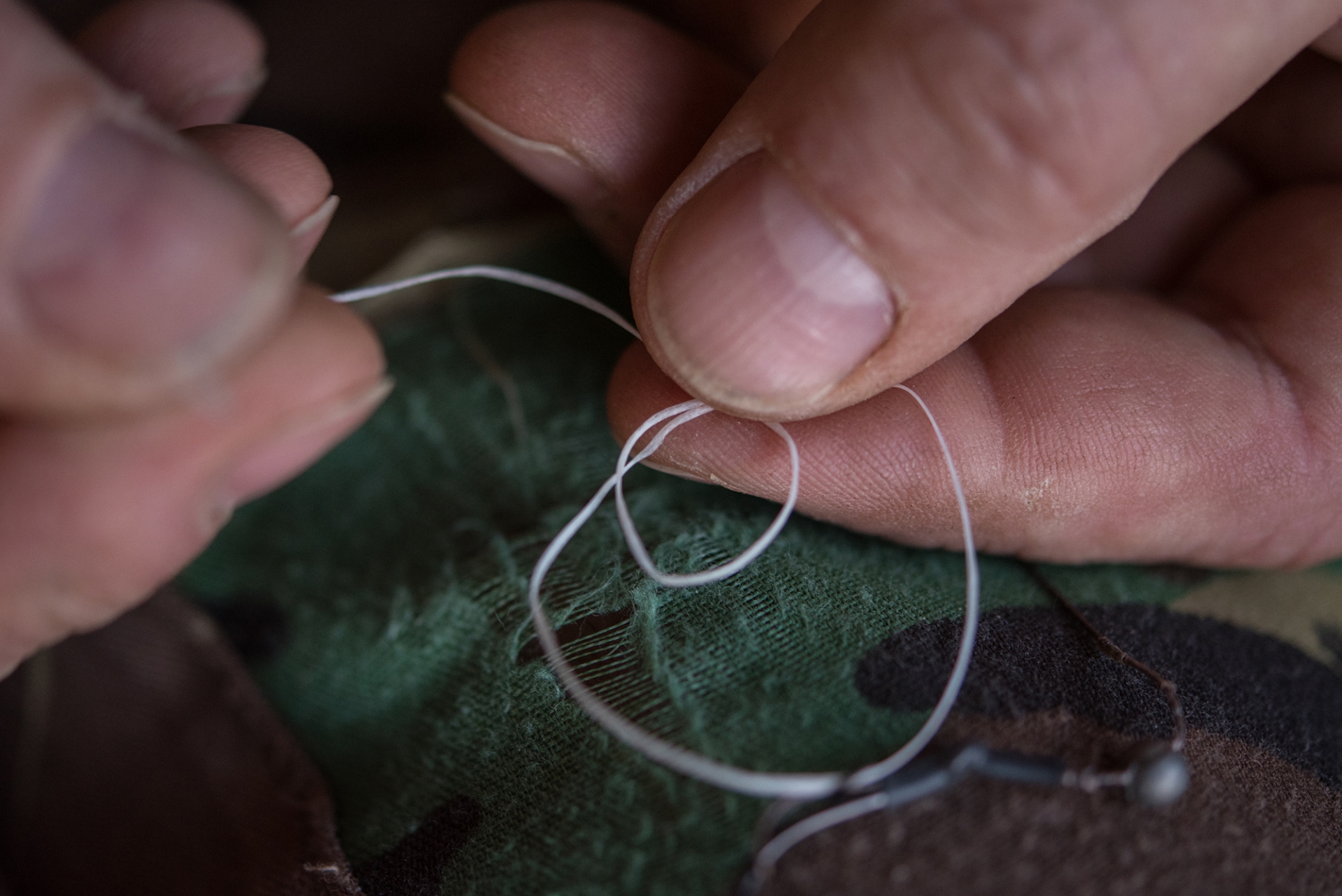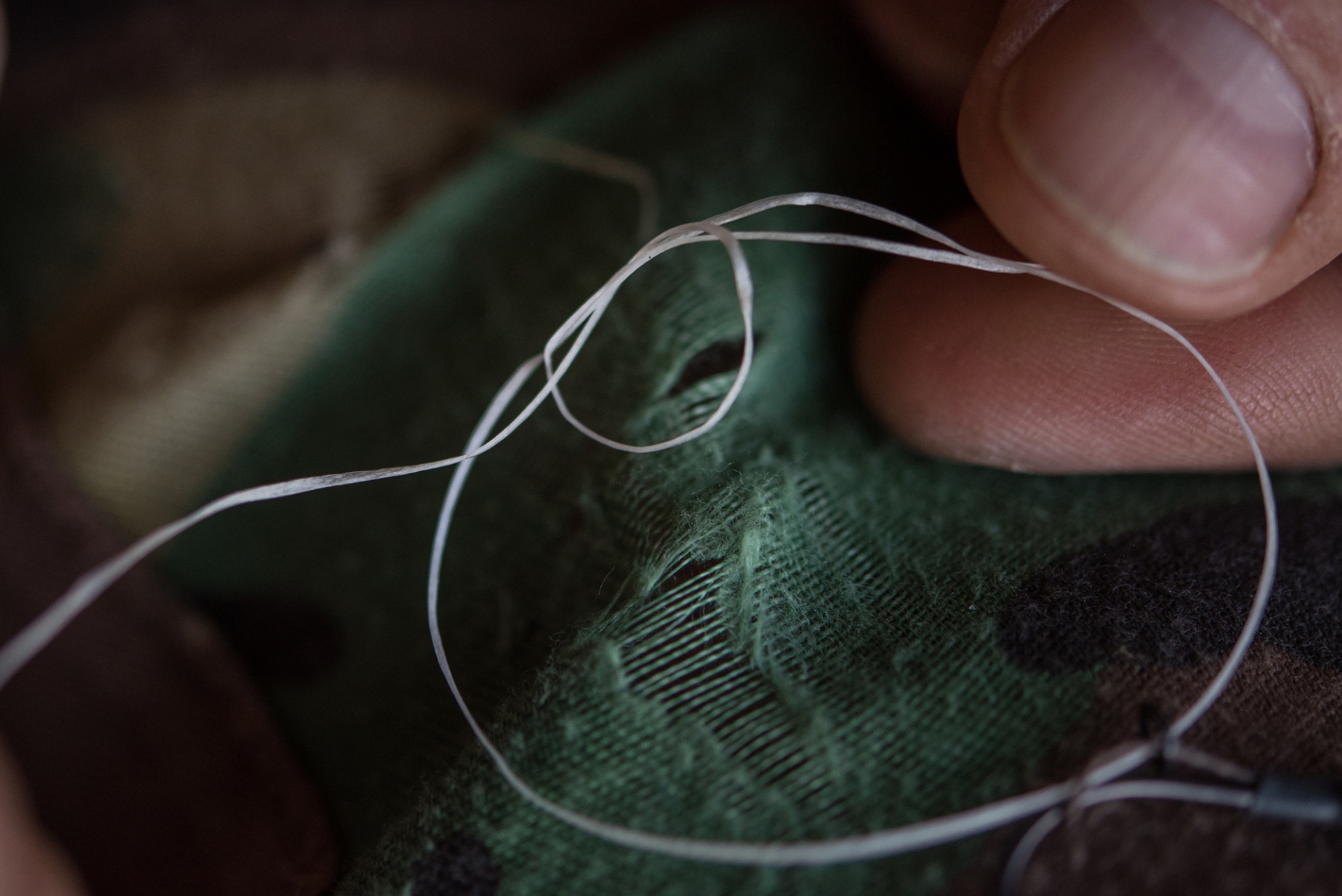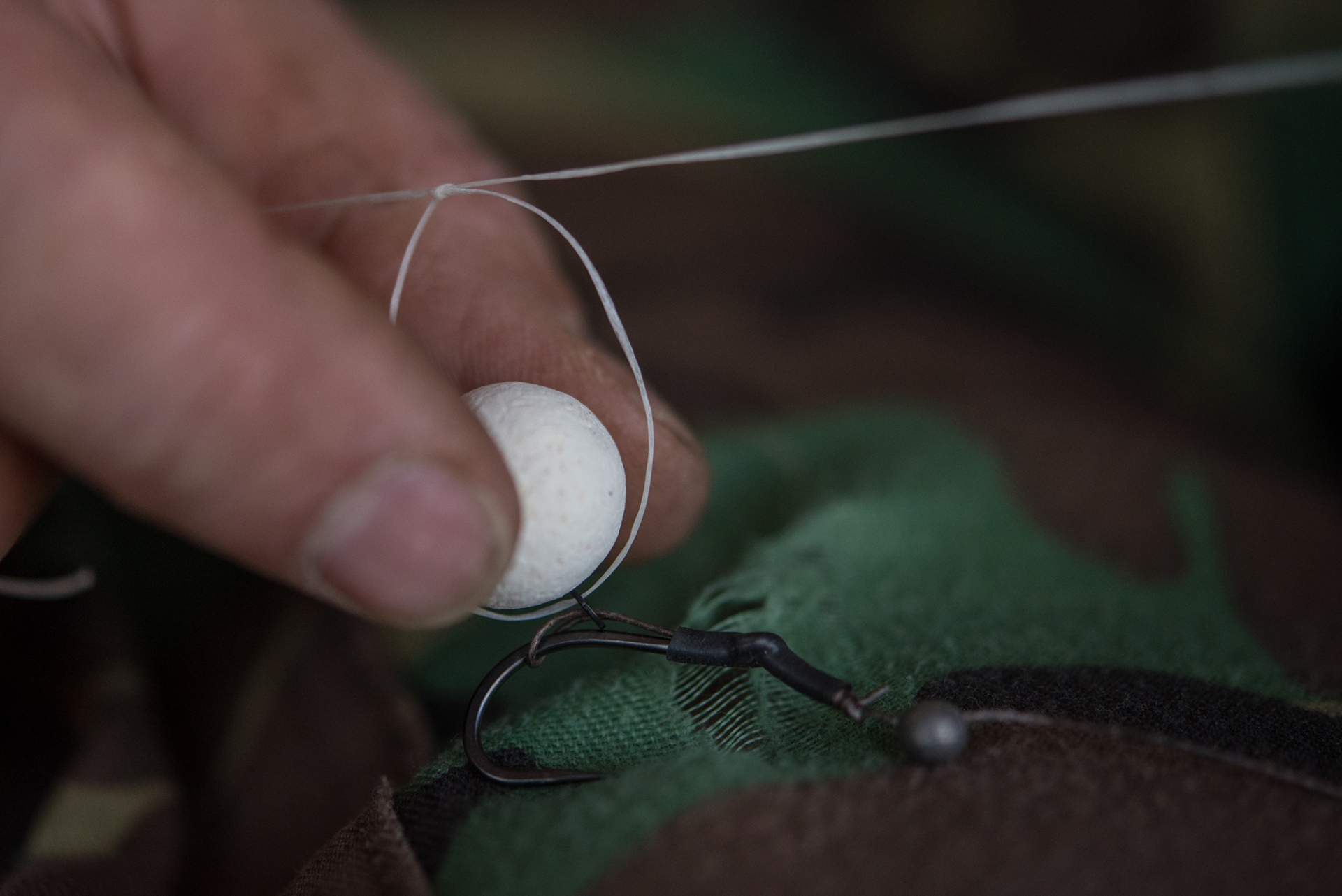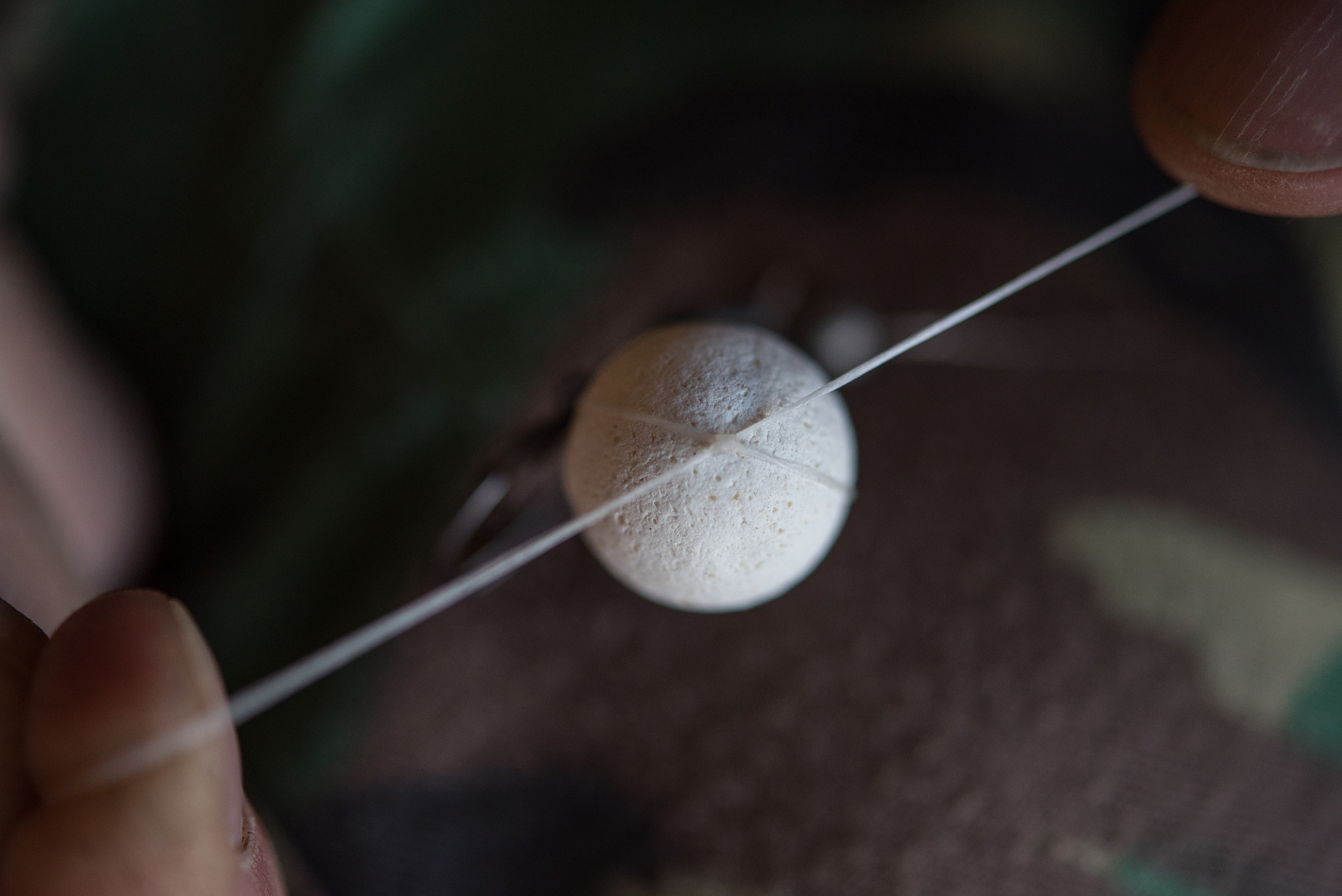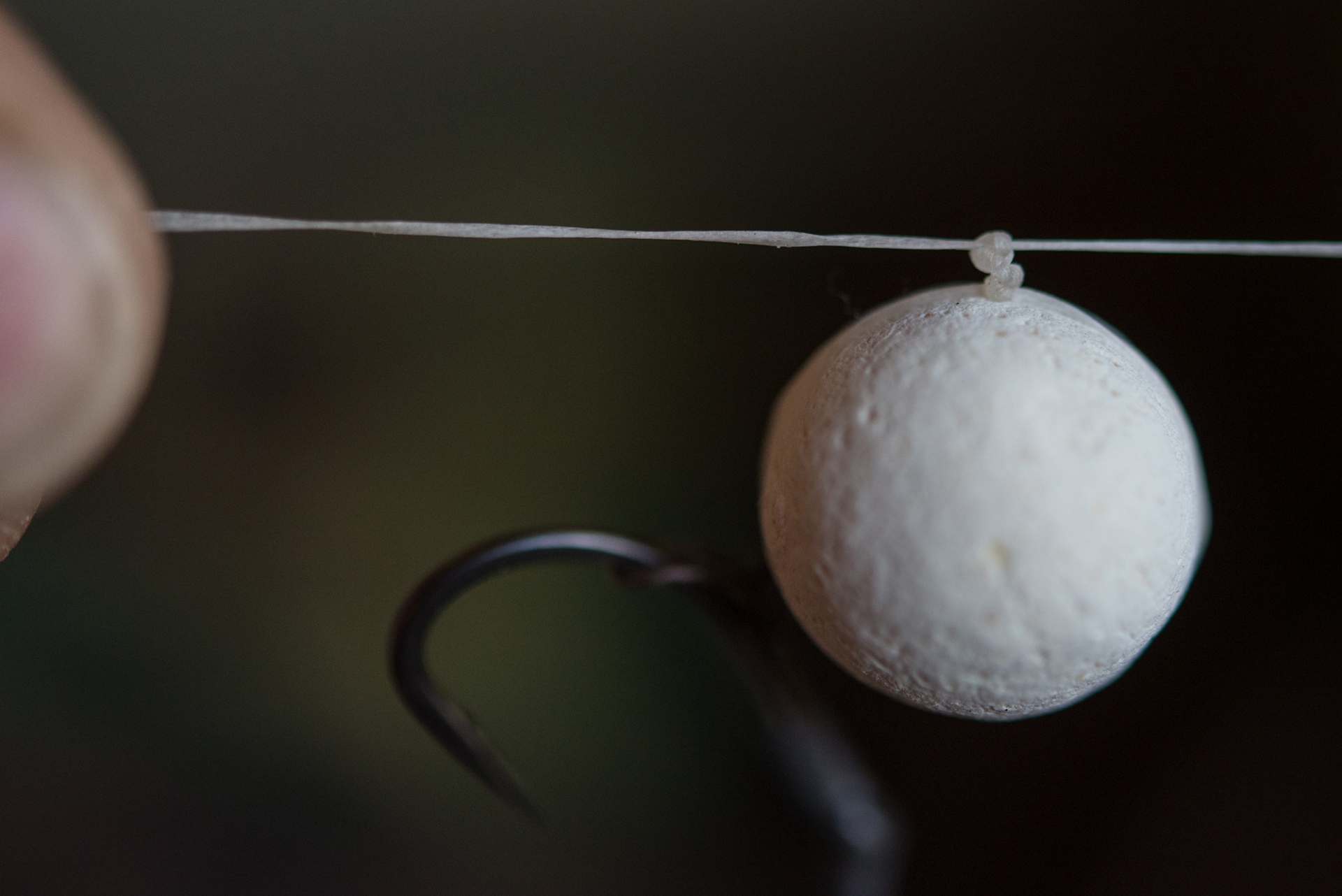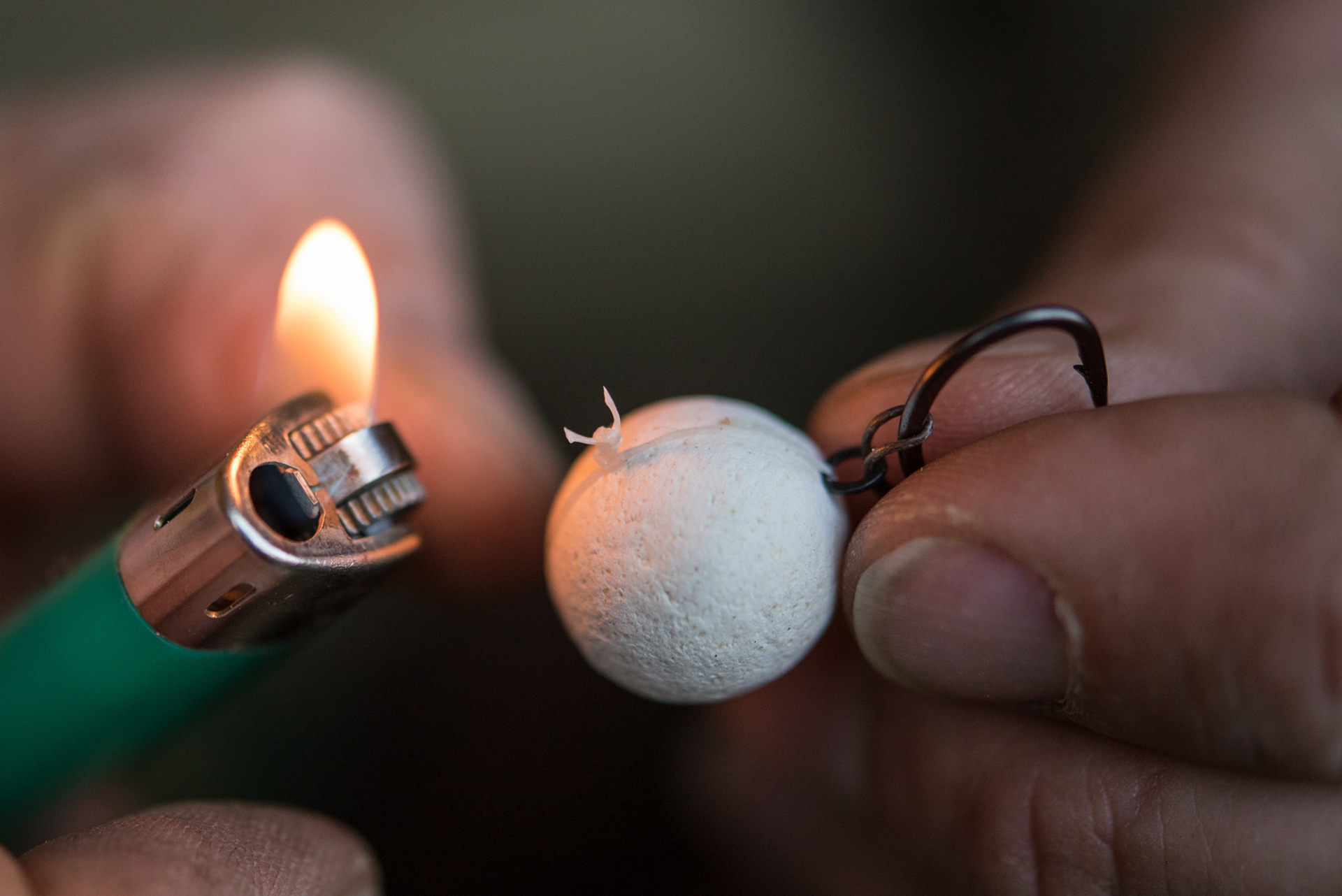There are a magnitude of different rigs that can be used when fishing popped up boilies as hook baits, the most common of all probably being the chod rig, but my personal preference is the multi rig. Both will help you massively to be confident whatever detritus you’re fishing over. If you’re less inclined to spend the start of your session markering a swim to find out what you’re fishing over, whether that be through lack of time, casting to showing fish or not wanting to cause disturbance to the swim, then a pop-up rig has the ability to fish more effectively when fishing ‘blind’ due to the nature of the hook bait being raised off the lakebed. Small amounts of debris like weed and leaf mulch can easily ensconce a standard boilie making it more difficult for carp to find, but with a pop-up the rig will often sit on top of any small amount of detritus giving the visual aspect, as well as the smell of the bait for the carp to find.
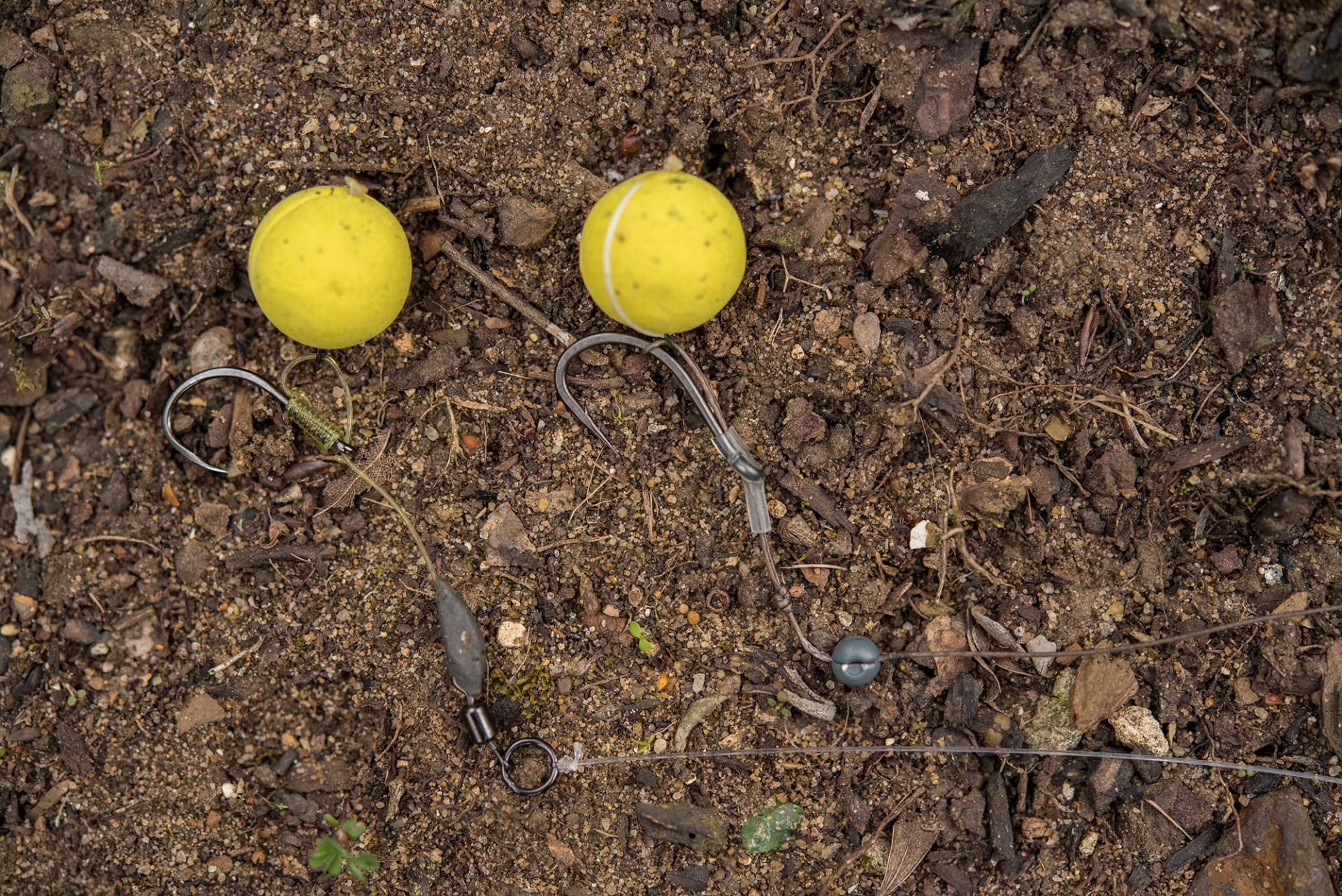
Another key attribute of fishing pop-ups is the anti tangle properties of the rig once it is in position on the lakebed. If smaller species of fish or even a crafty carp do pick up the hook bait and eject it, a pop-up is much less likely to tangle than a regular bottom bait meaning you are fishing more effectively. If the point of the hook becomes masked by leaves or weed then you’ll struggle to hook the carp, so a pop-up has many advantages over a bottom bait. Winding in after a session to find your rig clear is something you need to do on a frequent basis, reeling in clumps of weed at the end of your session can be soul destroying and really knock your confidence, so I much prefer fishing a pop-up for the benefits they have.
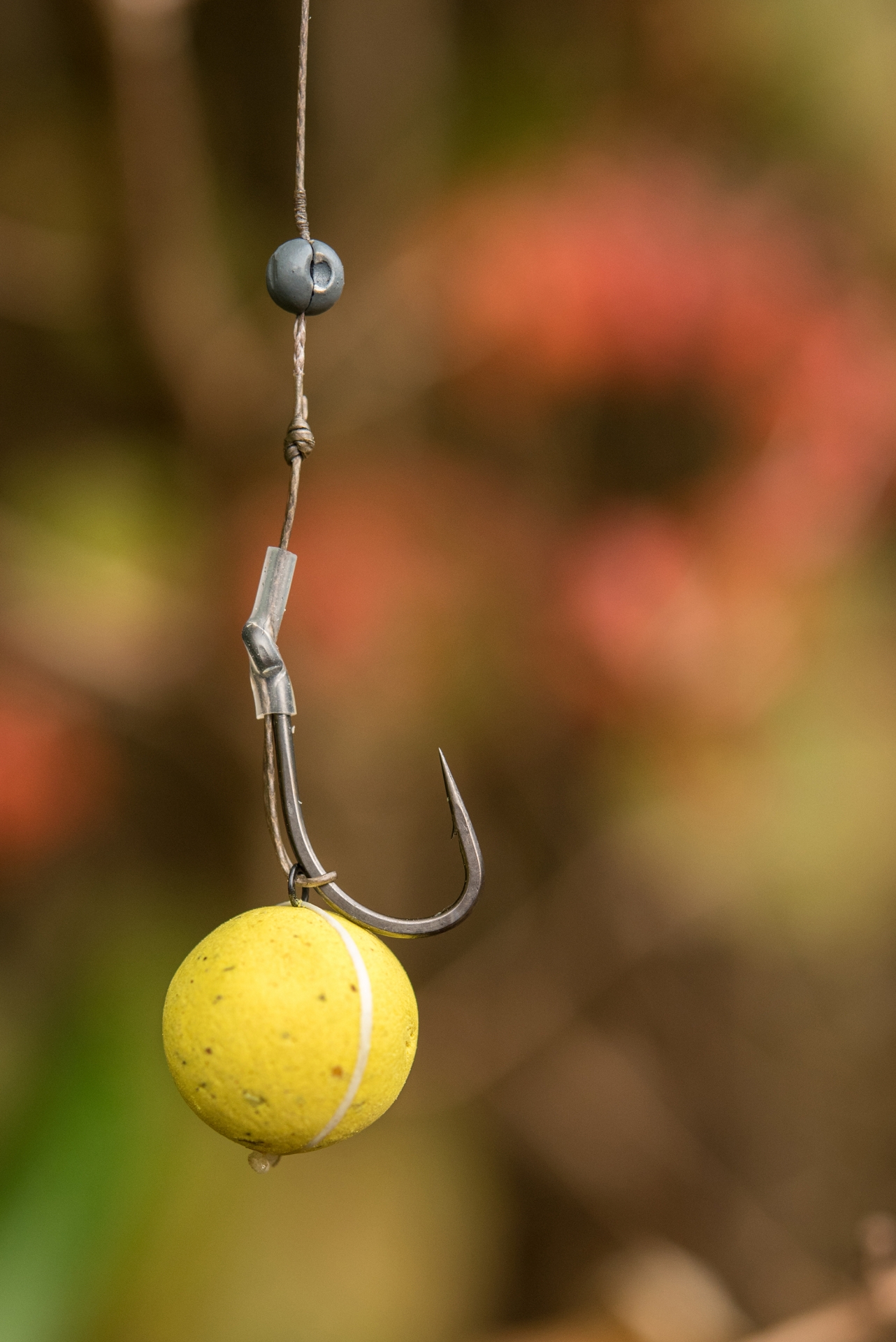
The Balance
It’s very important to balance the size of your hook to the size of your pop-up. A 12mm boilie will be best suited to something like a size eight hook for example, and a 16mm pop-up more suited to a size six hook or even a size four which is my preference. I prefer larger hooks purely down to confidence, a thicker gauge, larger hook will be stronger for the big carp that I target, especially in weedy or adverse conditions where a lot of pressure will be put upon the hook. You can even go right up to a size two hook for pop-ups of 18mm and above.
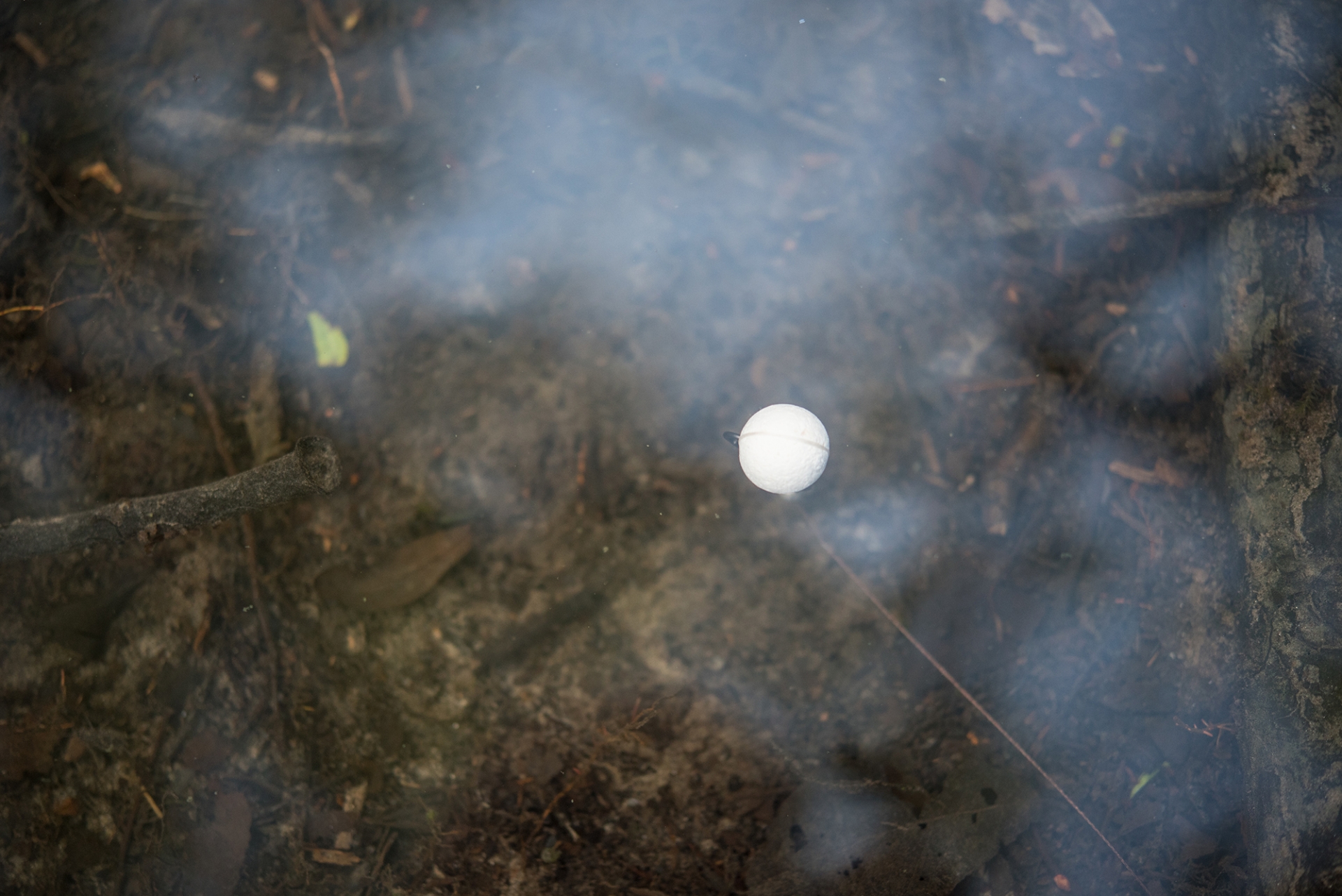
Buoyancy
It’s everything that’s essential and the whole ethos of fishing pop-ups in short. You need your hook bait to be suspended in the water column above the lakebed or weed that you’re fishing over, so it’s absolutely essential that your pop-up is buoyant enough. There are lots of varying factors that affect this too, so you have to put a bit of thought into it before you cast out, and don’t forget you can always test it in the margins beforehand to see how it sits.
For a chod rig it is absolutely essential that you use a very buoyant pop-up. The mechanics of the rig require the popup to rise up the length of line or leader to rest against the top bead and allow the rig to fish up or on top of a weed bed. If the pop-up is not buoyant enough for that then the lead could easily pull the hook section down into the weed rendering it useless. Remember that you can affect the pop-ups buoyancy by your method of attaching it to the rig too, piercing the skin of the boilie with a bait screw or to melt floss through the pop-up can allow water into the bait which, over time, will add weight and affect its buoyancy. I always tie my baits on for peace of mind, as when fishing for big carp I can easily have my rigs in position for 24 hours and longer.
A chod rig is not always the best rig for the situation though, and unless the weed is particularly thick, I would recommend a multi rig or hinged-stiff rig. In fact, because I will usually find a clearer area to fish over I’ve only ever fished a chod rig once, and that was after observing carp from up a tree picking natural food from the side and top of a weed bed. I actually went on to catch seven fish on that trip by putting the hook bait where they wanted to feed, so your eyes and watercraft are still absolutely essential no matter what rig you fish your pop-ups on.
Again the buoyancy is still essential to suspend the bait with these more standard pop-up rigs but other factors involving its buoyancy require a bit more thought. You’re usually looking to fish the multi rig so the hook bait sinks slowly. Counter-balancing your conventional pop-up rigs can be achieved with lead putty, split shot or even the wire from the inside of your leadcore and these older style rigs work on movement so you need to achieve this balance correctly. Testing them in the edge will help to achieve this and I will often add just enough weight so the pop-up sinks slowly in the water. Fishing deeper lake’s I know that the pressure will affect this further so by the next day the boilie will have taken on some water, even though I’ve tied my bait on and not pierced the skin of the bait, meaning it will sink much faster, but I need to ensure it’s still buoyant and you can only build this knowledge by doing it.
You can also over-weight your rig to make your hook rig sit much harder on the lakebed. This can have advantages and disadvantages in the way the bait rises and falls in the water when it’s disturbed by fish moving in and around the swim. Trying to get the hook bait to mimic the movement of the surrounding boilies that you’ve baited up with can be key to getting a bite, sometimes that means it needs so stay fairly still near the bottom so the carp can find it as they’re thrashing the bottom, other times that may cause them to spook as it’s not rising, drifting and floating around the water column like the other baits around it so it really is an unknown science and comes purely down to past experience and testing – a lot to think about for sure.
Another element that can adversely affect the buoyancy of your pop-up is the depth of water that you’re fishing in. Many years ago I went to a large tackle shop and they advised me on some new pop-ups that they’d ‘tank tested’ for seven, 10 and 14 days, exclaiming that they were still popped up and would be great for my big fish angling. I bought the tub and used them on the lake I was fishing at the time, and after fishing them on the first night I wound my rig in and tested it in the margins as I always do just to check it. Low and behold it was no longer popping up. I went into the shop and they didn’t believe me, “no that can’t be right” etc. etc. I left the shop on two or three occasions with a new tub to try and each time the same thing happened, and I soon worked out that testing them in the tank was no match for the ten to 16 foot I was fishing in. The pressure at those water depths was so much greater that their ‘tank test’ was completely inadequate. You only have to dive into a swimming pool to feel the effects water pressure has on your ears to put it into context, something I’m sure everyone has done at one time or another. Checking your pop-ups before and after your sessions is the only way you can pick up on these things so I can’t recommend it enough.
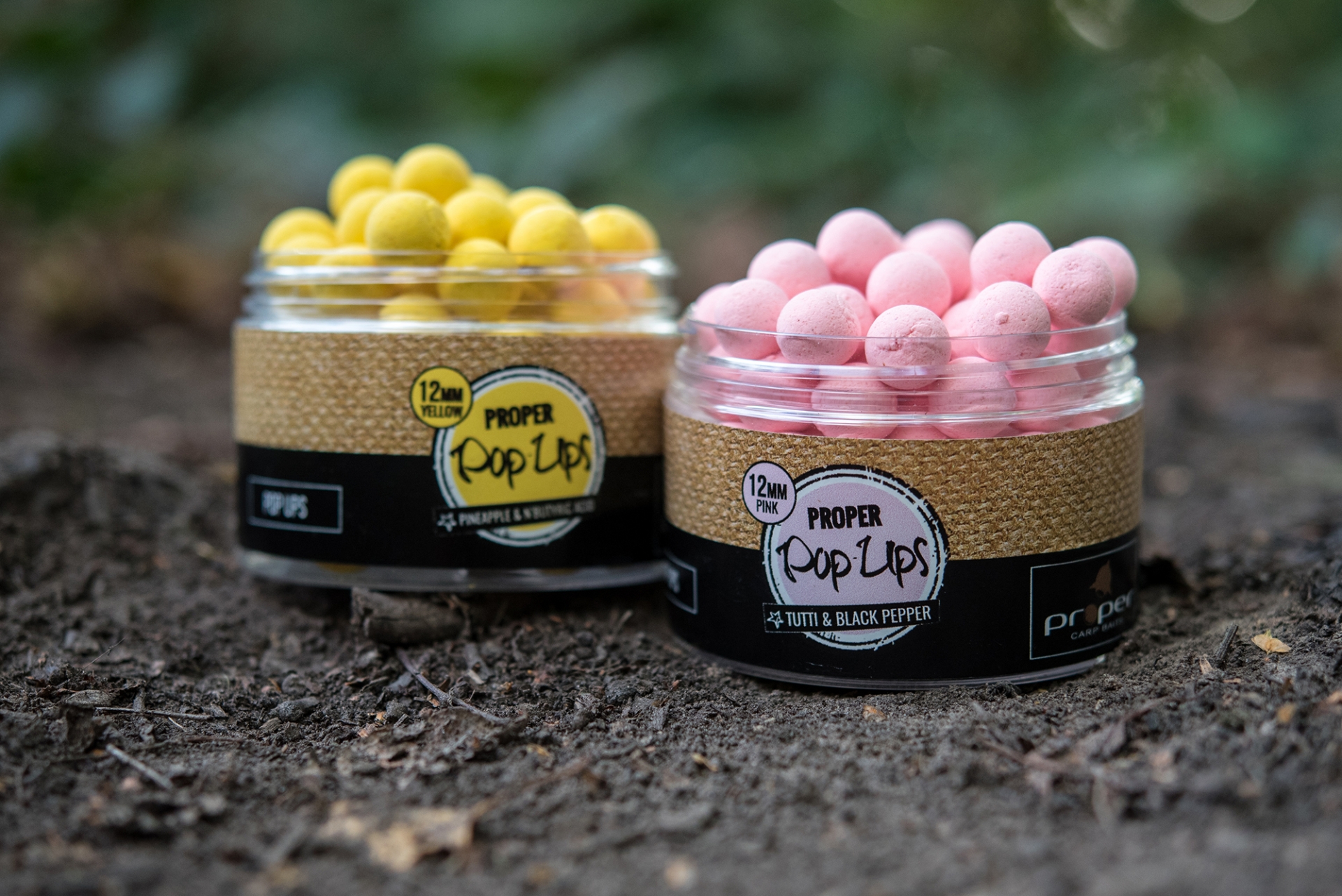
Colour Choice
People pay far too much attention to the colour choice of their pop-ups and it’s easily over-thought. A decade or two ago it was always the way to blend the pop-up into your freebies using as close a colour match as possible. These days, noticeably that’s changed completely and many anglers will opt to fish a ‘stand-out’ hook bait such as a bright white, yellow or pink to be easily picked out from the free offerings that surround it. The thinking behind it is that if there’s a bed of bait, whether that be 50 baits or five kilos, and the hook bait matches then the carp have to eat the entire quantity before ‘finding’ your hook in my mind to be ensured that they are going to actually pick up my hook bait. If you put a yellow or a white hook bait over your different colour fishmeal boilies then when the fish move in they will see the bright bait standing out amongst the big bed, and they’ll definitely inquisitively pick it up because they can see it. You’ll quite often find that they won’t have to eat the entire bed of bait for you to get a pick up.
Boosting Pop-Ups
I often hear about people boosting or soaking their pop-ups, you see companies often sell boosters for their pop-ups but it’s not something I usually do because I often fish over a scattering of bait. I feel that a boosted pop-up with extra attraction may well be more suited casting at showing fish or just simply fishing a single at range where a little bit of extra attraction may help the carp find your hook bait. Bear in mind that any absorbed liquid can affect the baits buoyancy so you have to always have that in mind too.
Cork Ball or Airball
The only time I will boost a hook bait is when I knock a batch of cork ball pop-ups up just to keep them in better condition. A little bit of cold-pressed hemp oil to coat them won’t solidify in cold water and will help to keep them for longer. Paste to make cork ball pop-ups can be bought ready-made or knocked up yourself but be aware that the baits may well be soluble, therefore they take on water and the paste will expand when water is absorbed into it. It may start as a 14mm bait but can end up at 18mm or even 20mm with the water ingress, again potentially changing the buoyancy and balance of the rig. Cork ball pop-ups are generally more buoyant than an airball pop-up and will certainly require different amounts of weight on the rig. An airball pop-up will mount with a bait screw if you use them but due to a cork ball only having one or two millimetres of paste they are often best used if you’re leaving your rigs out for long periods of time. Cork balls are very simple to make with just a pinch of paste wrapped around a cork ball, usually around one to two millimetres in size and then drop it into boiling water for just 30 seconds, as opposed to around 90 seconds for a regular boilie as there’s only a thin layer of paste to cook. Simply air dry them on a folded over towel at room temperature for three days, and finish them with a tiny glaze of cold-pressed hemp oil in a pot. It’s always worth bearing in mind that sometimes a little bit of preservative in the paste will stop anything going mouldy, particularly if you’ve used fresh eggs in your paste.
